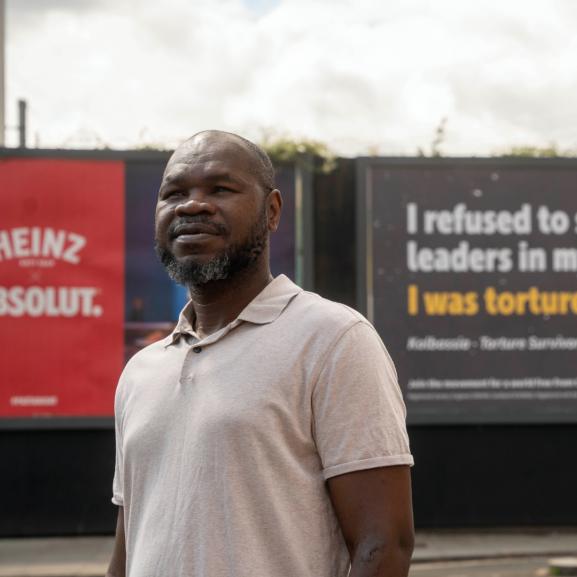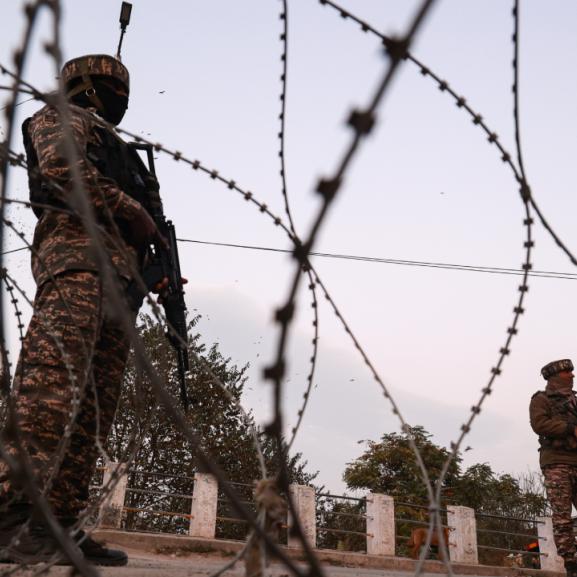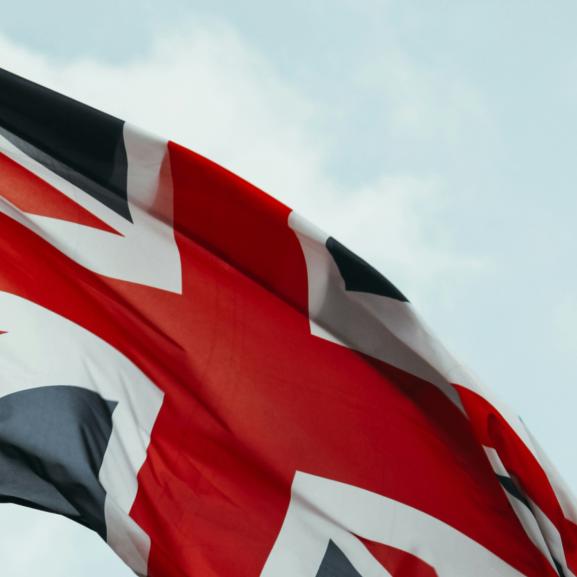Leading International Expert in Treating Torture Victims Joins Freedom from Torture
Dr Bhogendra Sharma, an expert in treating victims of torture who has also played a leading international role in campaigning against its use has joined the Medical Foundation to help plan the organisation's overseas work.
He has been appointed to the temporary post of international programme adviser. In that role he will assess the skills and expertise in which the MF can offer training to health professionals abroad, and seek partner organisations that might benefit from such training, initially in countries from where the MF has seen a high number of torture victims. He will also monitor the work of other international NGOs to guard against overlap, and explore the availability of funds for future MF projects overseas.
Dr Sharma, from Nepal, will combine his MF work with his role as president of the International Rehabilitation Council for Torture Victims, an organisation based in Denmark that works in collaboration with a network of nearly 200 rehabilitation centres and programmes world wide, and his position as president of the Centre for Victims of Torture in Nepal, an organisation that he founded after being imprisoned in a notorious torture centre in Kathmandu as a young student leader.
In recent years the MF has trained health professionals treating torture victims in Israel/Palestine, Somaliland, Kosovo, Bosnia, and Sri Lanka. At present, it is actively involved in helping torture victims in Guatemala and Mexico, and it is providing training in trauma counselling to the first generation of Master's degree psychologists to study at Prishtina University, in Kosovo. Further projects, it is anticipated, will materialise from Dr Sharma's research.
Acting MF Director Simon Carruth said: "The Medical Foundation is fortunate to have a man of Dr Sharma's calibre on its staff. He is very highly regarded throughout the human rights world. He will work in liaison with a steering group of MF staff who have experience and interest in international work, with his work taking place in parallel with continued discussion about the role of international work in our strategic plan."
Dr Sharma's passionate opposition to the infliction of pain and suffering began when, as a 12-year-old schoolboy, he witnessed torture firsthand, an experience that left an indelible mark on him. Living in a town in eastern Nepal, where his father was a high ranking civil servant, he accepted an invitation to visit the local police station, where the father of a school friend was a serving officer.
During the visit, in a courtyard bathed in bright afternoon sun, against a breathtaking backdrop of the Himalayas, he watched as three police officers armed with truncheons made from the wood of the ghangaru bush, renowned for its toughness, began beating a poorly dressed man, raining random blows down on his body and head, their movements mechanical, their faces expressionless.
Dr Sharma couldn't understand what was said, the victim's pleas were in a local dialect, but within minutes the man had collapsed into the dirt, but even then, his ordeal didn't stop - two of the officers simply hoisted up his feet while the third beat him on his bare soles. The man later died in hospital.
"I was terrified and disgusted," says Dr Sharma. "How could a person so helpless be treated like that. I went back home and told my mother. She said don't look into these places – the people who did this are devils, with no human heart.
"For a few days, I couldn't sleep. Every time I closed my eyes pictures of the man came into my head. Even in the classroom I kept asking myself why this happened. I tried talking to people about it and they said these criminals should be punished. I was curious what kind of crime people treated like this had done. I found out that they were pick pockets or servants of landlords who didn't work properly or were suspected of stealing. It was clearly a regular event."
Several years later Dr Sharma's desire to be a doctor was born when he heard a radio programme about a Nepali surgeon who had enabled a blind man to see, and after premedical studies in a health laboratory, and with a TB control project, he entered medical school in Kathmandu.
Interested by now in international politics, he began to question the authoritarian nature of the Nepali government and joined an underground cell of the All Nepal Free Student Union, educating fellow students and planning protests that the police invariably put down with force.
While walking in the street as a final-year medical student, he was suddenly confronted by two armed police officers who told him the chief of police wanted to see him. It was a case of mistaken identity – they believed he was another student leader that they were desperately hunting.
He was taken to Hanumandhoka police station, its position, surrounded by old palaces and beautiful temples in a part of Kathmandu favoured by tourists, belied by its reputation as one of the worst torture centres in the country.
Using the opportunity of a trip to the lavatory to discard the political pamphlets he was carrying, as well as tell-tale phone numbers from his diary, he prepared himself for the worst, and after a night in a cell, he was led into the interrogation room, complete with sticks, whips, clubs, chains and handcuffs on the wall.
"I expected to be tortured," says Dr Sharma. " When you become a student leader you are taught that at any time you can be arrested. You are prepared for that. You are taught to smile and talk to the men holding you to show that you are a dignified man in the hope they won't torture you. But when it's ordered from above nothing will stop it. At a lower level you try to befriend them. You are also taught to sign whatever they want you to so as not to be hurt. I was ready to sign anything they put in front of me."
His fears, however, were not realised. The interviewing officer, on being told his name and place of origin, recognised him as the son of a senior civil servant who had once employed him. Indeed, he had known Dr. Sharma as a child, and was able to vouch to his superiors that he was not the man they were after.
No-one, however, wanted to take responsibility for his release and for the next month Dr Sharma languished in a small cell, into which as many as 15-16 people were sometimes crammed. There he heard first hand accounts of torture from other prisoners, and of rape from crying women prisoners being held in a nearby room.
"They tried to find ways to make the pain as excruciating as possible, random beatings and beatings on the soles of the feet were very common, after which they would force the prisoner to jump up and down causing excruciating pain and damage," he says.
Conditions were abysmal. Relatives were expected to bring in food from the outside, and just two toilet visits were allowed a day, the "toilet" being the bare floor of a darkened room in the basement.
Following his release, Dr Sharma found that he could not study. "I couldn't concentrate on my books," he says. "I went to counselling sessions and took sleeping pills for some time. It took me six months to recover although I was not tortured physically. I had felt so helpless in prison, but after I went back to the university hospital I managed to contact other people who had been detained and tried to help them. I made a decision then to start working with victims of torture.
"When I became a doctor I spent a year's internship at a hospital and then immediately set up a torture treatment clinic with the help of donations from local people. Later on Amnesty International and the UN said they were interested in funding me, and in 1991 I came to the Medical Foundation in London to learn more about what was needed for such a centre."
Dr Sharma is now resident in London, having left Nepal with his family after a coup by King Gyanendra who in February 2005 sacked his government and banned press freedom as he sought to contain a Maoist insurgency that has left 11,000 dead since 1996.
"After the king imposed absolute rule, security agents started to follow me and my family began getting disturbing telephone calls," says Dr. Sharma. " I heard from several people that my life was in danger, and decided to come to the UK to share my expertise with friends and colleagues in other parts of the world."
In September 2005, however, Dr Sharma returned to Nepal during a visit by the UN's Special Rapporteur on Torture, Manfred Nowak, who was on a week's visit following increasing concern at human rights abuses including torture of detainees in recent years.
"Over all, the situation is even worse than when I left in early 2005," says Dr Sharma on his return to London. "More and more torture is going on. More places of detention have become inaccessible, and people who have been tortured are increasingly frightened about making contact with human rights groups.
"Torture by the state is relatively sophisticated, electricity is used a lot, various forms of sensory deprivation as well as beatings on the soles of the feet. The Maoists tend to break peoples' arms and legs, and cut off fingers. I was very pleased that Mr Nowak spoke out as strongly as he did when he left. He said that torture was systematically practised both by state agencies – the police and the army - and by the Maoists too. That is the reality of present day Nepal."
An humble hero who spells hope to troubled souls. Himalayan News 12/12/04 http://www.katmanduonline.com/featurestories/index.php





